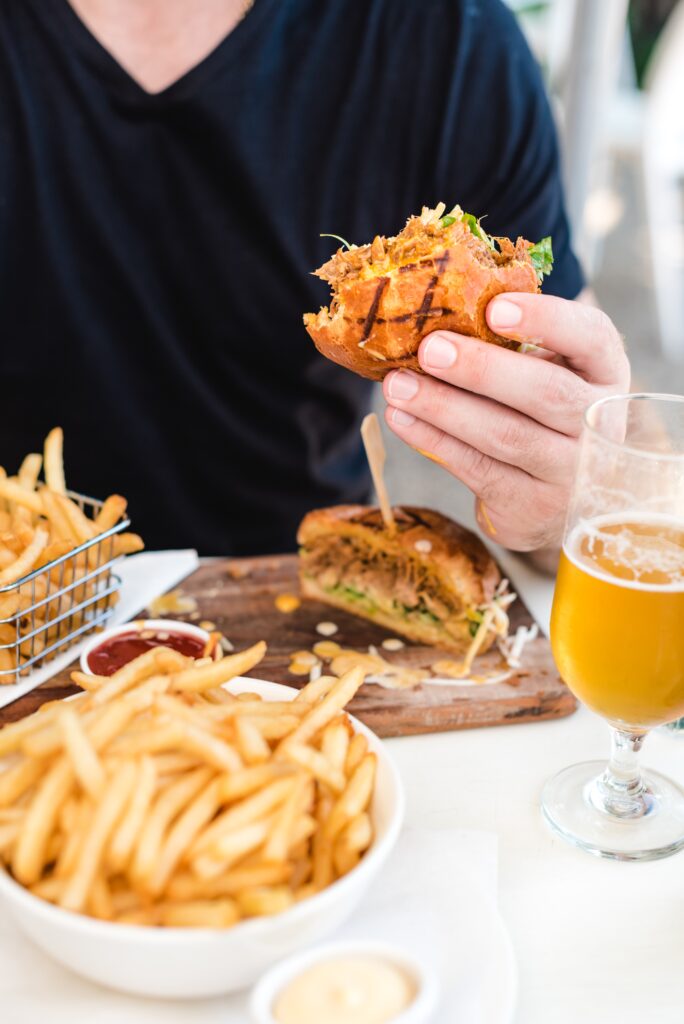Dining on a Dime
Dining on a dime refers to enjoying a meal at a restaurant or food establishment while being mindful of one’s budget. It involves seeking affordable dining options without compromising on the quality of the food or the overall dining experience.
Eating out on a budget has become increasingly popular due to various reasons. For many individuals and families, dining out is a way to relax, socialize, and enjoy a break from cooking and meal preparation. However, the rising living costs and economic uncertainties have made people need to find ways to save money, including dining out.
In recent years, there has been a noticeable trend towards cost-effective dining. People are becoming more conscious of their spending habits and actively seeking dining options that offer good value for money. This trend has been fueled by the emergence of budget-friendly restaurants, food trucks, and online platforms that provide deals and discounts for dining out.
How to stop living paycheck to paycheck, taking control of your finances and making a plan is crucial. Start by tracking your expenses and identifying areas where you can cut back. Create a budget that includes saving a portion of your income each month. Prioritize paying off high-interest debt to avoid the cost of credit and its negative impact on your finances. Additionally, understanding the power of compound interest can help you make smarter financial decisions. By investing your savings wisely and letting them grow over time, you can harness the power of compounding to build wealth and achieve your financial goals.
Planning Ahead
Research for best deals: Before heading out to a restaurant, take some time to research for the best deals in your area. Look for restaurants that offer discounts, promotions, or special offers.
Plan meals around discounts: Once you have identified restaurants with deals, plan your meals around those discounts. For example, if a restaurant offers a discounted lunch menu, consider having a midday meal instead of dinner.
Use of apps and websites: Utilize apps and websites that provide information on restaurant deals, such as Groupon, Yelp, or local dining guides. These platforms often offer exclusive discounts and coupons that can help you save money.
Smart Timing
Benefits of off-peak dining: Consider dining during off-peak hours, such as late lunch or early dinner. Many restaurants offer lower prices during these times to attract customers.
Happy hours and early-bird specials: Take advantage of happy hours and early-bird specials, where restaurants offer discounted drinks and appetizers. These can be a great way to enjoy a meal or drink at a lower cost.
Seasonal and weekday promotions: Watch for seasonal and weekday promotions. Many restaurants offer special deals on certain days of the week or during specific times of the year.
Coupon and Voucher Strategies
Finding and utilizing coupons: Look for coupons in newspapers, magazines, or online coupon websites. Some restaurants also offer coupons through their own websites or social media accounts.
Subscription for deals: Subscribe to newsletters or loyalty programs of your favorite restaurants to receive exclusive deals and coupons directly in your inbox.
Combine offers for savings: Maximize your savings by combining multiple offers. For example, use a coupon, a happy hour special, or a discounted gift card.
Loyalty Programs
Join restaurant loyalty programs: Sign up for loyalty programs offered by restaurants you frequent. These programs often provide benefits such as earning points for each visit or receiving member-exclusive deals.
Earn and redeem points: Take advantage of loyalty programs by earning points with each visit. Once you accumulate enough points, you can redeem them for discounts or free meals.
Member-exclusive deals: Loyalty program members often receive special promotions and discounts. Watch your emails or the restaurant’s app for these exclusive offers.
Portion Control and Sharing
Opt for appetizers or shared meals: Instead of ordering individual entrees, consider sharing appetizers or ordering smaller portions. This can help you save money while still enjoying a variety of dishes.
Understand portion sizes: Familiarize yourself with the portion sizes at different restaurants. Some establishments may serve more significant portions, which can be split between multiple people or saved for later.
Avoid over-ordering: Be mindful of how much food you need. Avoid over-ordering and wasting food by ordering only what you can finish.
Discovering Local Eats
Try local and family-owned spots: Explore local and family-owned restaurants in your area. These establishments often offer unique dining experiences and affordable prices.
Food trucks and street food: Consider trying out food trucks or vendors. They often offer delicious meals at lower prices compared to traditional restaurants.
Healthy and Economical Choices
Nutritious yet cost-effective options: Look for healthy menu choices that are also budget-friendly. Opt for dishes with lean proteins, fresh vegetables, and whole grains.
Balance cost and dietary needs: Consider your nutritional needs and budget when making menu choices. Look for options that provide both value for money and nutrition.
DIY Alternatives
Home-cooked meals vs. dining out: Consider preparing meals instead of dining out. Not only is it more cost-effective, but it also allows you to have control over the ingredients and portion sizes.
Potlucks and meal swaps: Organize potluck dinners or meal swaps with friends and family. This way, you can enjoy a variety of dishes without the cost of dining out.
Conclusion
Adopting a budget-friendly dining lifestyle: By implementing these strategies and tips, you can adopt a budget-friendly one without sacrificing the enjoyment of eating out.
Enjoy dining out economically: With careful planning, brilliant timing, and utilizing discounts and loyalty programs, you can enjoy dining out while keeping your expenses in check.
Tips for sustainable habits: Remember to be mindful of portion sizes, avoid food waste, and support local establishments for a more sustainable dining experience.

